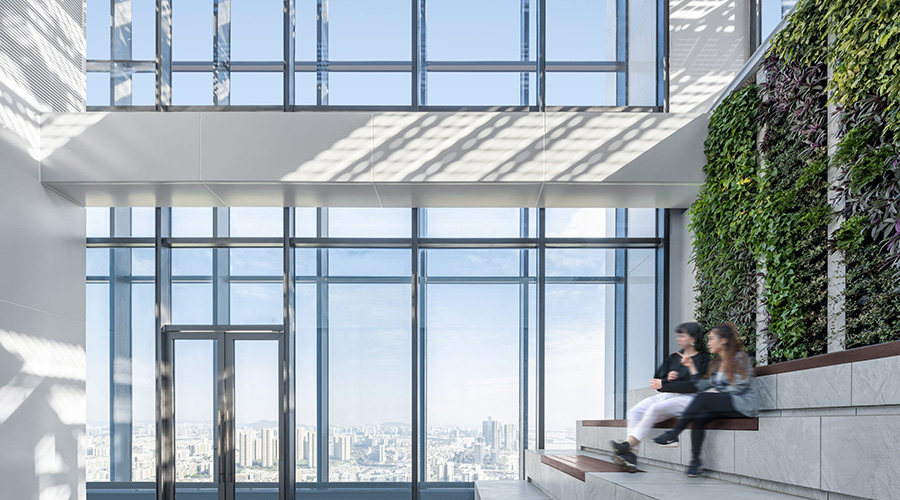Can 179D Energy Efficiency Tax Deductions Be Saved?
By Lawrence (Larry) Clark
OTHER PARTS OF THIS ARTICLEPt. 1: This Page
Although climate change may be somewhat controversial, nearly all of us agree that saving energy only makes good sense. Whether or not you believe that it helps the planet, it does save money. So reducing energy consumption is a reasonable goal for all facilities management professionals. BOMA — the Building Owners and Managers Association — recognizes that reducing energy consumption can help ROI and keep commercial rental properties more competitive. That’s why it was a driving force behind one of the major incentives for commercial building energy efficiency improvements: the tax deductions authorized by the Energy Policy Act of 2005 (EPAct 2005).
These tax deductions — implemented in Section 179D of the Internal Revenue Code — have been in effect since Jan. 1, 2006, and although no exact figures seem to be available, anecdotal evidence suggests that only a small percentage of eligible properties have taken advantage of this program. Many facility managers who are intelligent and knowledgeable about their businesses, still may not completely understand how the tax deductions work. And fewer still understood the ramifications for their own qualified projects. And now, finally, when the word about the 179D tax deductions is being more widely spread, the tax deductions for these energy-conserving projects are scheduled to expire on Dec. 31, 2013.
Because of the impending demise of the Section 179D benefits, last September a group of bi-partisan Senators introduced S. 3591. This legislation, known as the “Commercial Building Modernization Act,” would have extended the tax deductions for another three years, increased the maximum amount of the qualifying deduction to $3.00 per square foot (or, in the case of an older — great than 10 years — building, to $4.00 per square foot), and would have, for the first time, allowed private non-profits and Real Estate Investment Trusts to participate. Unfortunately, it died in the last session of Congress. As a replacement for the EPAct 2005 benefits, it was endorsed by such diverse groups as the National Association of Realtors, SMACNA, the Polyisocyanurate Insulation Manufacturers Association, and the National Electrical Contractors Association. Nevertheless, as of this writing it has still not been re-introduced, even though an analysis by the Natural Resources Defense Council, The Real Estate Roundtable, and the USGBC projected that passage of S. 3591 would result in more than 77,000 jobs being created.
The tax benefits of EPAct 2005 were intended to encourage energy efficiency in private sector commercial and government-owned buildings (for whatever reason, private non-profit property owners were never included), both new construction and existing buildings. It provides for tax deductions up to $1.80 per square foot for whole building performance and there are partial deductions for improvements in the areas of lighting, HVAC, and building envelope. For government buildings, the benefit can be allocated to the primary designer on the project (architect, engineer, or contractor).
The deductions are based on meeting performance, not prescriptive, requirements. Thanks to the Interim Lighting Rules, the lighting deduction is generally the easiest to obtain. Typical qualifying projects include warehouses (in South Florida, for example, a lighting retrofit of an unconditioned warehouse may actually qualify the property for the full $1.80 per square foot deduction); retail spaces that replace their existing lighting with LEDs; commercial office buildings with a lot of LEDs; hotels (although the standard is ASHRAE 90.1-2001, a hotel designed to the next version -- ASHRAE 90.1-2004 -- will automatically qualify for the full $0.60 per square foot lighting deduction); apartments, more than 3 stories (condos don’t qualify); and parking garages. Government buildings that can qualify for the allocation of the benefit to the primary designer include those owned by the federal government as well as any state or local governmental entity.
If you agree that the 179D tax deductions should be extended, whether it’s to save the planet, someone’s job, or to help your bottom line, please contact your Senators and Representatives and let them know what you think.
Lawrence (Larry) Clark, CEA, GGP, LEED AP O+M, is principal of Fort Lauderdale, Fla.-based Sustainable Performance Solutions LLC, provider of energy audits, general energy-efficiency and sustainability consulting services, and metering and submetering solutions. Clark has more than a dozen published articles on HVAC- and energy-related topics to his credit and frequently lectures on central-energy-plant optimization, metering/submetering, and advanced ventilation.
Related Topics:











